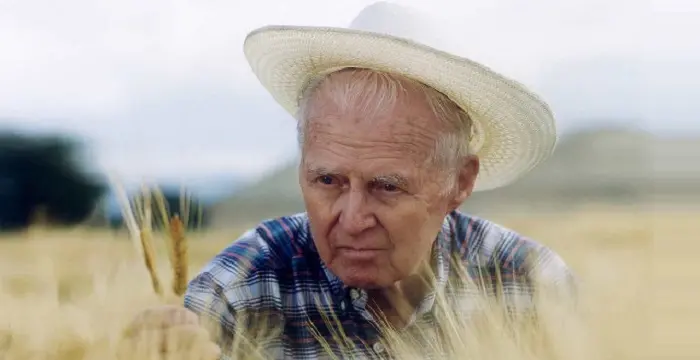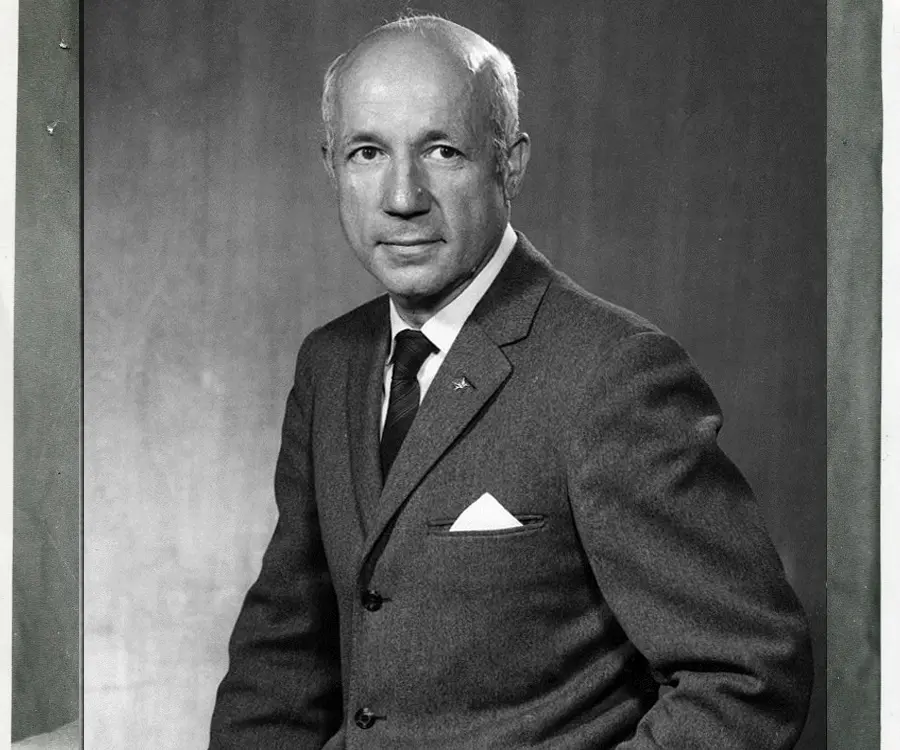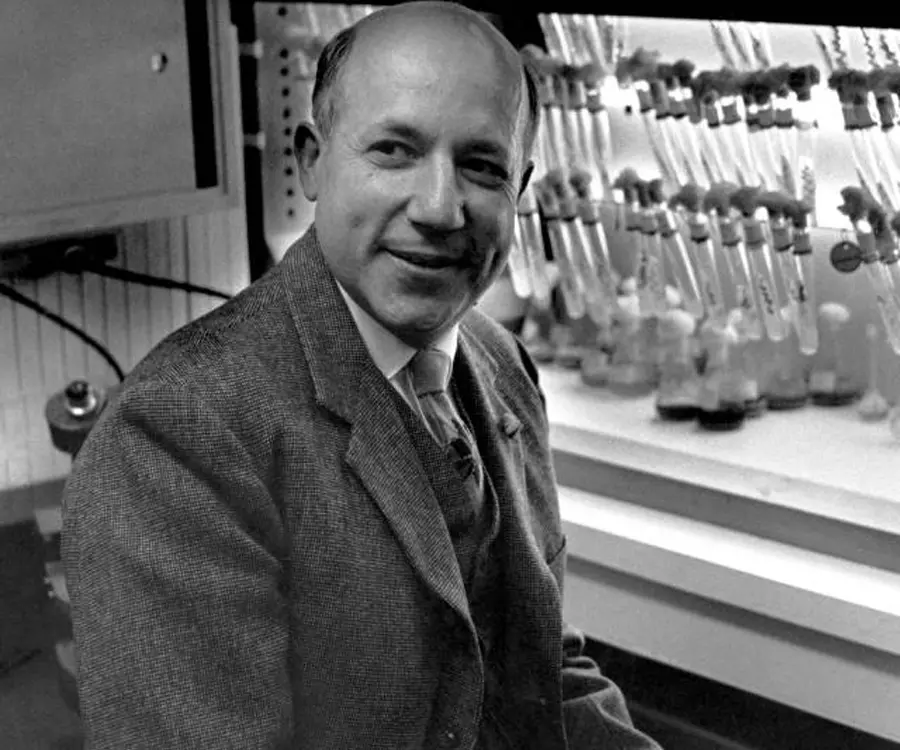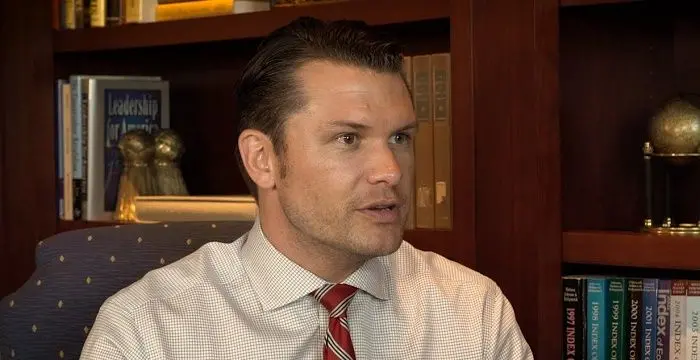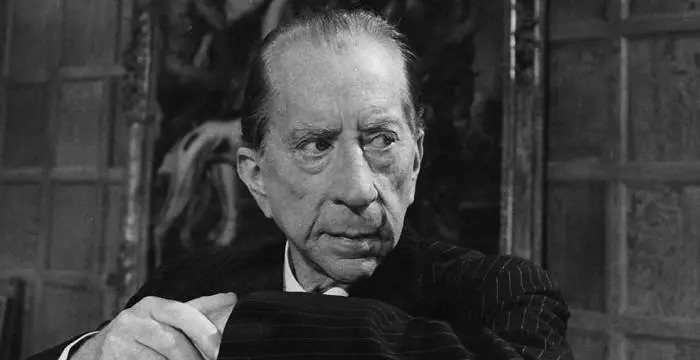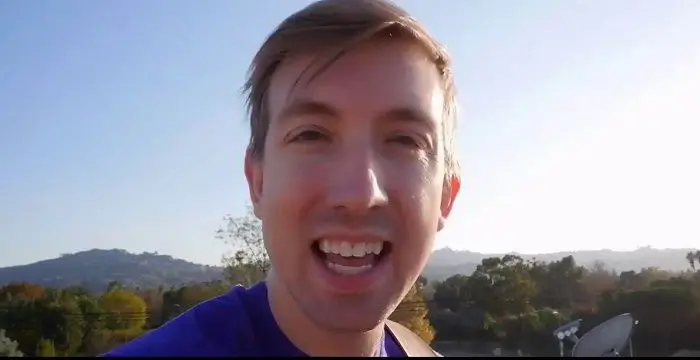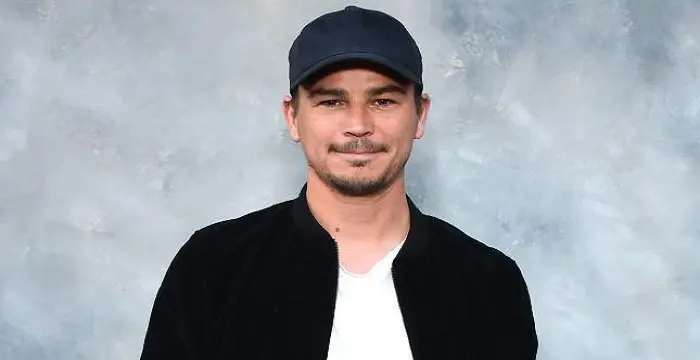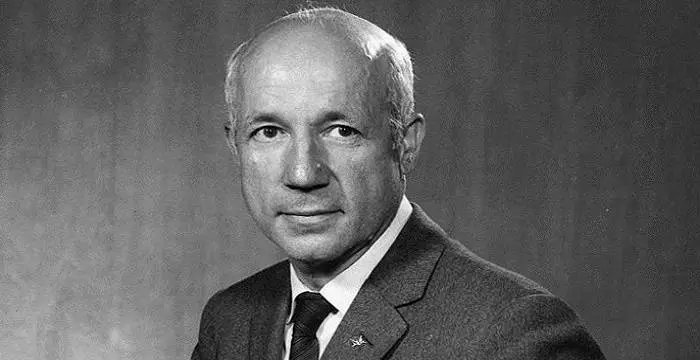
Melvin Calvin - University Of Minnesota, Birthday and Family
Melvin Calvin's Personal Details
Melvin Ellis Calvin was a Jewish-American biochemist who was awarded the ‘Nobel Prize’ in Chemistry in 1961
| Information | Detail |
|---|---|
| Birthday | April 8, 1911 |
| Died on | January 8, 1997 |
| Nationality | American |
| Famous | University Of Minnesota, Scientists, Biochemists |
| City/State | Minnesota |
| Spouses | Marie Genevieve Jemtegaard |
| Known as | Melvin Ellis Calvin |
| Childrens | Elin, Karole, Noel |
| Universities |
|
| Notable Alumnis |
|
| Birth Place | St. Paul, Minnesota, USA |
| Gender | Male |
| Father | Elias Calvin |
| Mother | Rose Herwitz |
| Sun Sign | Aries |
| Born in | St. Paul, Minnesota, USA |
| Famous as | Biochemist |
| Died at Age | 85 |
// Famous University Of Minnesota
Russell M. Nelson
Russell M. Nelson is an American religious leader, author, and philanthropist. Check out this biography to know about his birthday, childhood, family life, achievements and fun facts about him.
Norman Borlaug
Norman Borlaug was an American biologist known as the “Father of the Green Revolution”. This biography of Norman Borlaug provides detailed information about his childhood, life, achievements, works & timeline.
Robert M. Pirsig
Robert M. Pirsig is a contemporary American writer and philosopher. Read this biography to learn more about his childhood, life, works and timeline.
Melvin Calvin's photo
Who is Melvin Calvin?
Melvin Ellis Calvin was a Jewish-American biochemist who was awarded the ‘Nobel Prize’ in Chemistry in 1961 for his renowned discovery of the ‘Calvin cycle’ that encompass three phases of light-independent reactions of photosynthesis - carbon fixation, reduction reactions, and ribulose 1,5-bisphosphate (RuBP) regeneration. This discovery was made by Calvin along with American biologist Andrew Benson and American scientist James Bassham. In his career span of around five decades, most of which was spent at the ‘University of California’, Berkeley, he made several studies that yielded significant discoveries covering a broad area of biological and physical chemistry. The series of investigations made by Calvin included work on hydrogen activation; radiation chemistry; electronic structure of organic molecules; artificial photosynthesis; photoelectronic, electronic and photochemical behaviour of porphyrins; and chemical evolution of life among others. He worked on isolating and purifying plutonium from other irradiated nuclear fission products of uranium by applying chelation and solvent extraction while working in the ‘Manhattan Project’. He and his wife Genevieve Jemtegaard collaborated to study chemical factors present in Rh blood group system and helped to ascertain structure of one of the Rh antigens that they named ‘elinin’. He received several awards and recognition including ‘Davy Medal’ from the ‘Royal Society of London’ (1964), ‘Priestley Medal’ (1978) and the U.S. ‘National Medal of Science’ (1989).
// Famous Scientists
Juliane Koepcke
Juliane Koepcke is a German-Peruvian biologist, who was the lone survivor among the 92 passengers and crew of the ill-fated LANSA Flight 508 that crashed in the Peruvian rainforest on 24 December 1971. Know more about her life in this biography.
Henry Cavendish
Henry Cavendish was a theoretical chemist and physicist, renowned for discovery of hydrogen and calculation of the mass of earth. To know more about his childhood, profile, timeline and career read on
Konstantin Tsiolkovsky
Konstantin Tsiolkovsky was a Russian rocket scientist and a pioneer of astronautics. This biography provides detailed information about his childhood, family, personal life, career, achievements, etc.
Childhood & Early Life
He was born on April 8, 1911, in St. Paul, Minnesota, to Jewish immigrants Elias Calvin and Rose Herwitz, who originally hailed from the Russian Empire.
His family relocated to Detroit, Michigan when he was very small. In 1928 he completed his graduation from ‘Central High School’, Detroit.
After receiving a full scholarship from ‘Michigan College of Mining and Technology’ (at present ‘Michigan Technological University’) in Houghton, he joined the college and studied geology, mineralogy, civil engineering and paleontology. All these subjects proved to be extremely beneficial for his future scientific endeavours.
His studies got interrupted for a year during the Great Depression that saw him working in a brass factory as an analyst. He finally earned his B.Sc. degree from ‘Michigan College of Mining and Technology’ in 1931.
In 1935 he obtained Ph.D in chemistry from the ‘University of Minnesota’ submitting his thesis on electron affinity of halogen atoms.
Thereafter he received a ‘Rockefeller Foundation’ grant following which he pursued his postdoctoral work at the ‘University of Manchester’. There he came under the guidance of Professor Michael Polanyi under whom he researched on metalloporphyrins, activation of molecular hydrogen and coordination catalysis.
Career
In 1937 he was inducted as an instructor at the ‘University of California’, Berkeley. His career path in the university saw a gradual rise first advancing as a Full Professor in 1947 and then as a Professor of Molecular Biology in 1963, a post he retained till his retirement in 1980.
He carried on with his research on activation of molecular hydrogen at Berkeley that he started at Manchester and started studying colour of organic compounds that led him to investigate the electronic structures of organic molecules.
While investigating molecular genetics during the early 1940s, he suggested involvement of hydrogen bonding in the piling of nucleic acid bases in the thread like structures called chromosomes, present in the nucleus of living organisms.
With the entry of the US in the ‘Second World War’, Calvin worked for the ‘National Defense Research Council’. During the war he researched on cobalt complexes which generate an oxygen producing device for destroyers or submarines by reverse bonding with oxygen.
His development of the procedure to procure oxygen from atmospheres proved to be extremely significant for application on patients suffering from breathing problems.
His contribution in the ‘Manhattan Project’, the wartime research and development project to develop atomic bombs included working on separating and purifying plutonium from uranium’s other irradiated nuclear fission products by using chelation and solvent extraction.
In 1946 he became the founder-director of an inter-disciplinary bio-organic chemistry group, which at that time was housed in ‘Lawrence Radiation Laboratory’. Thus the old dilapidated wooden structure devoid of any internal walls became his first open laboratory. He also served as the Associate Director of the ‘Lawrence Radiation Laboratory’ till his retirement in 1980 and carried out many of his significant research works there.
His Nobel Prize winning research that he initiated in 1946 encompassed elucidating the way plants make use of sunlight and chlorophyll to metamorphose water and carbon dioxide into the biological molecule, carbohydrate.
Calvin along with his collaborators James Bassham and Andrew Benson applied the radioactive isotope carbon-14 to trace out the entire track travelled by the chemical element carbon through a plant at the time of photosynthesis. The tracer technique was elucidated by them in ‘Isotopic Carbon’ (1949).
They displayed that it is the action of sunlight on the chlorophyll of a plant not on carbon dioxide, as was earlier perceived, that triggers the development of organic compounds.
While investigating, he suspended a green algae, chlorella, into water after which it was exposed to light followed by addition of carbon dioxide containing carbon-14 to it. A new research device, paper chromatography was applied to trace existence of carbon-14 while the algae underwent its life process generating carbohydrates from water, carbon dioxide and minerals.
Thus it became possible to ascertain the compounds that contain radioactive carbon at different steps of photosynthesis. Such findings were detailed in the books ‘The Path of Carbon in Photosynthesis’ (1957) and ‘The Photosynthesis of Carbon Compounds’ (1962).
As the bioorganic group of Calvin required more space, the ‘Laboratory of Chemical Biodynamics’ was developed in the campus of the ‘University of California’, Berkeley in the early 1960s. This circular building that is characterised with open labs and a number of windows with few walls, referred as the ‘Roundhouse’ or ‘Calvin Carousel’, which was designed by Calvin himself, is an architectural manifestation of his vision. He remained Director of the lab till his retirement in 1980 following which the lab was rechristened as ‘Melvin Calvin Laboratory’. Post retirement he used to come to his office and worked with a small team of researchers until 1996.
From 1963 to 1964 he served as President of the ‘American Society of Plant Physiologists’.
In 1964 the ‘Dow Chemical Company’ inducted him as a member of its Board of Directors. He was part of many scientific boards of the US government including the ‘Science Advisory Committee’ of the President that he served twice for President John F. Kennedy and President Lyndon B. Johnson.
In 1971 he was made the President of the ‘American Chemical Society’.
He was a member of the ‘Royal Society of London’ and the ‘National Academy of Sciences’.
Calvin was conferred honorary D.Sc. degrees from ‘Oxford University’, ‘University of Nottingham’, ‘Northwestern University’ and ‘Michigan College of Mining and Technology’.
On May 1992, the ‘American Chemical Society’ published his autobiography titled ‘Following the Trail of Light: A Scientific Odyssey’.
He had written over 600 articles and 7 books.
Awards & Achievements
In 1961 he received the ‘Nobel Prize’ in Chemistry.
Personal Life & Legacy
In 1942 he married Marie Genevieve Jemtegaard and the couple was blessed with two daughters, Karole and Elin and a son, Noel.
On January 8, 1997, he passed away in Berkeley, California, USA at the age of 86.
// Famous Biochemists
Robert Huber
Robert Huber is a German biochemist and Nobel Laureate. Check out this biography to know about his childhood, life, achievements, works & timeline.
Charles Best
Charles Best was a great scientist and a renowned physiologist who is remembered for being the co-discoverer of insulin. Read this biography to learn about his profile, childhood, life and timeline.
Isaac Asimov
Isaac Asimov was an American professor of biochemistry and a renowned author of science fiction and popular science books. Read this biography to know more about his life.
Melvin Calvin's awards
| Year | Name | Award |
|---|---|---|
Other | ||
| 0 | AIC Gold Medal (1979) | |
| 0 | National Medal of Science (1989 | |
| 0 | Nobel Prize for Chemistry (1961) | |
| 0 | Davy Medal (1964) | |
| 0 | Priestley Medal (1978) | |
Melvin Calvin biography timelines
- // 8th Apr 1911He was born on April 8, 1911, in St. Paul, Minnesota, to Jewish immigrants Elias Calvin and Rose Herwitz, who originally hailed from the Russian Empire.
- // 1928His family relocated to Detroit, Michigan when he was very small. In 1928 he completed his graduation from ‘Central High School’, Detroit.
- // 1931His studies got interrupted for a year during the Great Depression that saw him working in a brass factory as an analyst. He finally earned his B.Sc. degree from ‘Michigan College of Mining and Technology’ in 1931.
- // 1935In 1935 he obtained Ph.D in chemistry from the ‘University of Minnesota’ submitting his thesis on electron affinity of halogen atoms.
- // 1942In 1942 he married Marie Genevieve Jemtegaard and the couple was blessed with two daughters, Karole and Elin and a son, Noel.
- // 1946 To 1980In 1946 he became the founder-director of an inter-disciplinary bio-organic chemistry group, which at that time was housed in ‘Lawrence Radiation Laboratory’. Thus the old dilapidated wooden structure devoid of any internal walls became his first open laboratory. He also served as the Associate Director of the ‘Lawrence Radiation Laboratory’ till his retirement in 1980 and carried out many of his significant research works there.
- // 1946His Nobel Prize winning research that he initiated in 1946 encompassed elucidating the way plants make use of sunlight and chlorophyll to metamorphose water and carbon dioxide into the biological molecule, carbohydrate.
- // 1949Calvin along with his collaborators James Bassham and Andrew Benson applied the radioactive isotope carbon-14 to trace out the entire track travelled by the chemical element carbon through a plant at the time of photosynthesis. The tracer technique was elucidated by them in ‘Isotopic Carbon’ (1949).
- // 1957 To 1962Thus it became possible to ascertain the compounds that contain radioactive carbon at different steps of photosynthesis. Such findings were detailed in the books ‘The Path of Carbon in Photosynthesis’ (1957) and ‘The Photosynthesis of Carbon Compounds’ (1962).
- // 1961In 1961 he received the ‘Nobel Prize’ in Chemistry.
- // 1963 To 1964From 1963 to 1964 he served as President of the ‘American Society of Plant Physiologists’.
- // 1964In 1964 the ‘Dow Chemical Company’ inducted him as a member of its Board of Directors. He was part of many scientific boards of the US government including the ‘Science Advisory Committee’ of the President that he served twice for President John F. Kennedy and President Lyndon B. Johnson.
- // 1971In 1971 he was made the President of the ‘American Chemical Society’.
- // 1980 To 1996As the bioorganic group of Calvin required more space, the ‘Laboratory of Chemical Biodynamics’ was developed in the campus of the ‘University of California’, Berkeley in the early 1960s. This circular building that is characterised with open labs and a number of windows with few walls, referred as the ‘Roundhouse’ or ‘Calvin Carousel’, which was designed by Calvin himself, is an architectural manifestation of his vision. He remained Director of the lab till his retirement in 1980 following which the lab was rechristened as ‘Melvin Calvin Laboratory’. Post retirement he used to come to his office and worked with a small team of researchers until 1996.
- // May 1992On May 1992, the ‘American Chemical Society’ published his autobiography titled ‘Following the Trail of Light: A Scientific Odyssey’.
- // 8th Jan 1997On January 8, 1997, he passed away in Berkeley, California, USA at the age of 86.
// Famous Minnesota peoples
Pete Hegseth
Pete Hegseth is a FOX News Channel contributor from America. Check out this biography to know about his childhood, family life, achievements and fun facts about him.
Gavin Thomas
Gavin Thomas is an American social media star. Check out this biography to know about his family, personal life, including his age, birthday, etc.
J. Paul Getty
J. Paul Getty was an American billionaire businessman and president of the Getty Oil Company. This biography offers detailed information about his childhood, life, career and timeline.
Ash Hardell
Ash Hardell is an American YouTuber who is notable for the comedic content, stop-motion animation videos. Check out this biography to know about her birthday, childhood, family life, achievements and fun facts about her.
Chad Wild Clay
Chad Wild Clay is a YouTuber who posts a variety of videos. Check out this biography to know about his birthday, childhood, family life, achievements, and fun facts about him.
Josh Hartnett
Josh Hartnett is an actor who rose to prominence during the 1990s as a teen heart throb. This biography of Josh Hartnett provides detailed information about his childhood, life, achievements, works & timeline.
Melvin Calvin's FAQ
What is Melvin Calvin birthday?
Melvin Calvin was born at 1911-04-08
When was Melvin Calvin died?
Melvin Calvin was died at 1997-01-08
Where was Melvin Calvin died?
Melvin Calvin was died in Berkeley, California, USA
Which age was Melvin Calvin died?
Melvin Calvin was died at age 85
Where is Melvin Calvin's birth place?
Melvin Calvin was born in St. Paul, Minnesota, USA
What is Melvin Calvin nationalities?
Melvin Calvin's nationalities is American
Who is Melvin Calvin spouses?
Melvin Calvin's spouses is Marie Genevieve Jemtegaard
Who is Melvin Calvin childrens?
Melvin Calvin's childrens is Elin, Karole, Noel
What was Melvin Calvin universities?
Melvin Calvin studied at University Of Minnesota, Michigan College of Mining and Technology, University of Minnesota
What was Melvin Calvin notable alumnis?
Melvin Calvin's notable alumnis is University Of Minnesota
Who is Melvin Calvin's father?
Melvin Calvin's father is Elias Calvin
Who is Melvin Calvin's mother?
Melvin Calvin's mother is Rose Herwitz
What is Melvin Calvin's sun sign?
Melvin Calvin is Aries
How famous is Melvin Calvin?
Melvin Calvin is famouse as Biochemist

